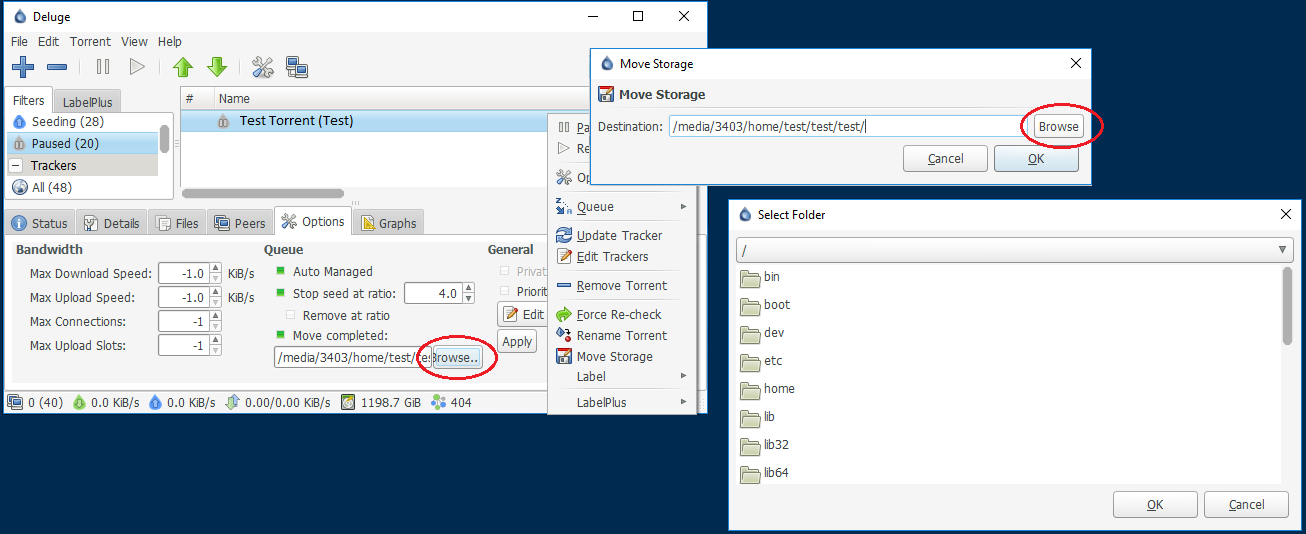
- #How to connect to deluge using deluge client how to
- #How to connect to deluge using deluge client install
- #How to connect to deluge using deluge client download
#How to connect to deluge using deluge client download
Once both deluged and deluge-web have been run you can point your browser to The first thing to do (after changing the default password) is change the download directory to either /home/$USER/snaps/deluge-lukewh/common/Downloads or /mnt/ in the preferences, depending on whether you are running the snap as a user or daemon. $HOME/snap/deluge-lukewh/common/Downloads is also created to store your downloads. The configuration is then stored in $HOME/snap/deluge-lukewh/common/.config/deluge.

These will be run with the default behaviour of deluge (fork). Look for the Deluge auth file in the server computer. Connect to a NordVPN regular server on your smartphone. The remaining steps are for the NordVPN option. For what its worth, I cant connect to the Database Engine either on my client using.
#How to connect to deluge using deluge client how to
You can use an SSH tunnel or an additional VPN connection. How to Connect to Analysis Services from Client Management Studio. We can use GUI option to start Deluge or use following command.
#How to connect to deluge using deluge client install
sudo add-apt-repository ppa:deluge-team/ppa sudo apt-get update sudo apt-get install deluge Start Deluge. To install latest published on Deluge PPAs using the following commands. If you have a green dot, then click on connect, it should connect. Now, you’ll need to link your Deluge client with the server. Deluge is already available in ubuntu official Ubuntu repositories. If its not connected, but set up correctly, you will see a green dot in the status field. If its connected you will see a 'plugged in socket' icon. Snap service stop -disable luged-service snap service stop -disable luge-web-service On relaunching Deluge windows client, the connection manager should have automatically connected to RPi daemon. If you don't want to use the daemon you can stop and disable them with: You may need to mkdir /mnt/.įor the snap to see this mount you will need to run snap connect deluge-lukewh:removable-media manually. We will use the exact same proxy settings for each, but you have to enter them 1 by 1. The easiest way I've found to share downloads with users is to create a directory in your home folder and mount it to /mnt with mount -bind /mnt/ you can then add both root and your user to a group that has permissions in that folder. To use PIA’s proxy server with Deluge, first go to Edit > Preferences > Proxy (from the categories on the left) Deluge requires you to manually configure the proxy settings for each service individually. The following daemons will auto-start on install:ĭluged-service luge-web-serviceĭaemons run as root and the configuration is saved to /var/snap/deluge-lukewh/common/.config/deluge There are three main user interfaces (UIs): In Thinclient mode a Deluge daemon handles all the BitTorrent activity and is able to run on headless machines with the user-interfaces connecting remotely from any other platform.

As Deluge heavily utilises the libtorrent library it has a comprehensive list of the features provided.ĭeluge has been designed to run as both a normal standalone desktop application and as a client-server.

Deluge contains the common features to BitTorrent clients such as Protocol Encryption, DHT, Local Peer Discovery (LSD), Peer Exchange (PEX), UPnP, NAT-PMP, Proxy support, Web seeds, global and per-torrent speed limits.


 0 kommentar(er)
0 kommentar(er)
